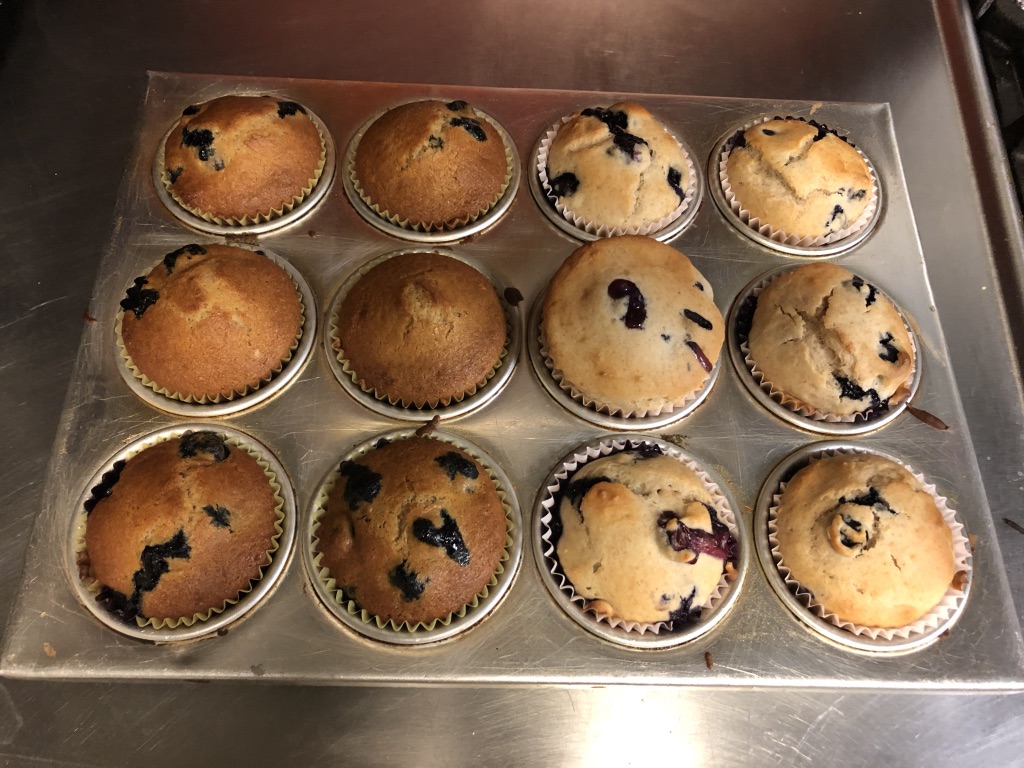
Explore chemical leaveners in quick breads and find out what happens when you use different leavening agents with our blueberry muffin recipe (see below)!
Biscuits, muffins, pancakes, waffles, scones, and cornbread are all examples of quick breads. The process of making quick breads usually involves a mixture of wet and dry ingredients and uses chemical leaveners such as baking soda and baking powder to create a chemical reaction allowing the bread to rise. And because baking is such a science, having all your ingredients correctly measured is important because too much of one ingredient can drastically change your end product.
In this video, watch Chef Sarah make blueberry muffins using different leavening agents. Observe the experiment and identify the difference between using baking soda and baking powder and how they change the outcomes of the recipe.
If you want to try the experiment at home, follow these steps:
First make the control version, which is the recipe made as written with 1 tsp baking powder and ½ tsp baking soda.
Then you can try one or both of these variations, the recipe made with all baking soda (1½ tsp total) and/or the recipe made with all baking powder (1½ tsp total).
You can fill out the following chart based on your quick bread.
| Variation: | Smell: What does your quick bread smell like? | Sight: What does your quick bread look like? | Feel: What is the texture of your quick bread? | Taste: What do you taste? |
| Control: | ||||
| Baking soda: | ||||
| Baking powder: |
Additional questions to consider:
Which quick bread was most appealing? Why? What affected the final outcome of the quick bread?
More info on chemical leavening agents:
- Baking Soda is a white powder consisting of a base (sodium bicarbonate). It reacts with an acid to form a neutralization reaction which releases carbon dioxide causing your quick bread to rise.
- Baking powder consists of baking soda + acid(s) already added. It reacts once with the wet ingredients and then again with heat to form carbon dioxide. It is also known as double-acting baking powder.
Blueberry Muffins
Makes 12
Ingredients:
4 tablespoons butter
¾ cup sugar
½ lemon, zested
1 cup plain yogurt
1 large egg
1 ½ teaspoons baking powder
½ teaspoon baking soda
¼ teaspoon salt
1 cup all-purpose flour
½ cup whole wheat flour, can use all-purpose flour if needed
1 ½ cups blueberries, fresh or frozen
Preparation:
- Heat oven to 375°F. Line a muffin tin with paper liners or spray each cup with a nonstick spray.
- Melt butter in the bottom of a large bowl and whisk in sugar, lemon zest, yogurt and egg until smooth.
- Whisk in baking powder, baking soda and salt until fully combined, then lightly fold in flour and berries. Batter will be very thick, like a cookie dough.
- Divide between prepared muffin cups. Bake for 25 to 30 minutes, until tops are golden and a toothpick inserted into the center of muffins comes out clean. Let cool in pan for 10 minutes then cool completely on a rack.


